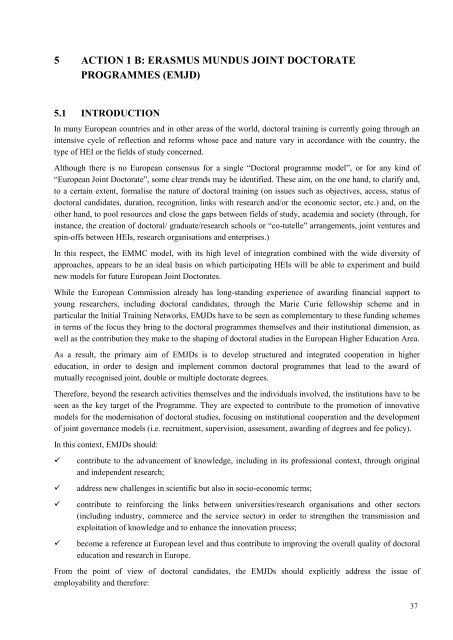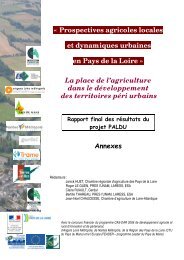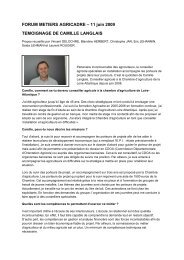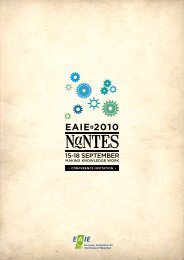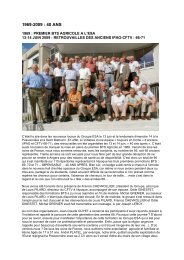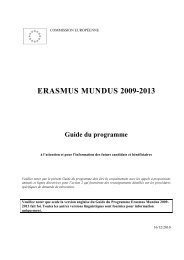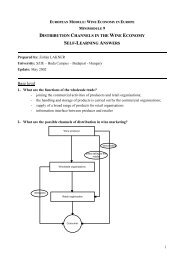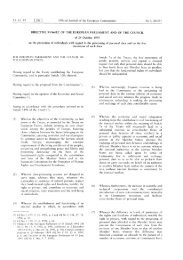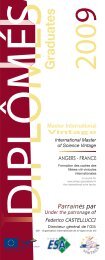ERASMUS Mundus Program Guide - EACEA - Europa
ERASMUS Mundus Program Guide - EACEA - Europa
ERASMUS Mundus Program Guide - EACEA - Europa
Create successful ePaper yourself
Turn your PDF publications into a flip-book with our unique Google optimized e-Paper software.
5 ACTION 1 B: <strong>ERASMUS</strong> MUNDUS JOINT DOCTORATE<br />
PROGRAMMES (EMJD)<br />
5.1 INTRODUCTION<br />
In many European countries and in other areas of the world, doctoral training is currently going through an<br />
intensive cycle of reflection and reforms whose pace and nature vary in accordance with the country, the<br />
type of HEI or the fields of study concerned.<br />
Although there is no European consensus for a single “Doctoral programme model”, or for any kind of<br />
“European Joint Doctorate”, some clear trends may be identified. These aim, on the one hand, to clarify and,<br />
to a certain extent, formalise the nature of doctoral training (on issues such as objectives, access, status of<br />
doctoral candidates, duration, recognition, links with research and/or the economic sector, etc.) and, on the<br />
other hand, to pool resources and close the gaps between fields of study, academia and society (through, for<br />
instance, the creation of doctoral/ graduate/research schools or “co-tutelle” arrangements, joint ventures and<br />
spin-offs between HEIs, research organisations and enterprises.)<br />
In this respect, the EMMC model, with its high level of integration combined with the wide diversity of<br />
approaches, appears to be an ideal basis on which participating HEIs will be able to experiment and build<br />
new models for future European Joint Doctorates.<br />
While the European Commission already has long-standing experience of awarding financial support to<br />
young researchers, including doctoral candidates, through the Marie Curie fellowship scheme and in<br />
particular the Initial Training Networks, EMJDs have to be seen as complementary to these funding schemes<br />
in terms of the focus they bring to the doctoral programmes themselves and their institutional dimension, as<br />
well as the contribution they make to the shaping of doctoral studies in the European Higher Education Area.<br />
As a result, the primary aim of EMJDs is to develop structured and integrated cooperation in higher<br />
education, in order to design and implement common doctoral programmes that lead to the award of<br />
mutually recognised joint, double or multiple doctorate degrees.<br />
Therefore, beyond the research activities themselves and the individuals involved, the institutions have to be<br />
seen as the key target of the <strong>Program</strong>me. They are expected to contribute to the promotion of innovative<br />
models for the modernisation of doctoral studies, focusing on institutional cooperation and the development<br />
of joint governance models (i.e. recruitment, supervision, assessment, awarding of degrees and fee policy).<br />
In this context, EMJDs should:<br />
<br />
<br />
contribute to the advancement of knowledge, including in its professional context, through original<br />
and independent research;<br />
address new challenges in scientific but also in socio-economic terms;<br />
<br />
<br />
contribute to reinforcing the links between universities/research organisations and other sectors<br />
(including industry, commerce and the service sector) in order to strengthen the transmission and<br />
exploitation of knowledge and to enhance the innovation process;<br />
become a reference at European level and thus contribute to improving the overall quality of doctoral<br />
education and research in Europe.<br />
From the point of view of doctoral candidates, the EMJDs should explicitly address the issue of<br />
employability and therefore:<br />
37


